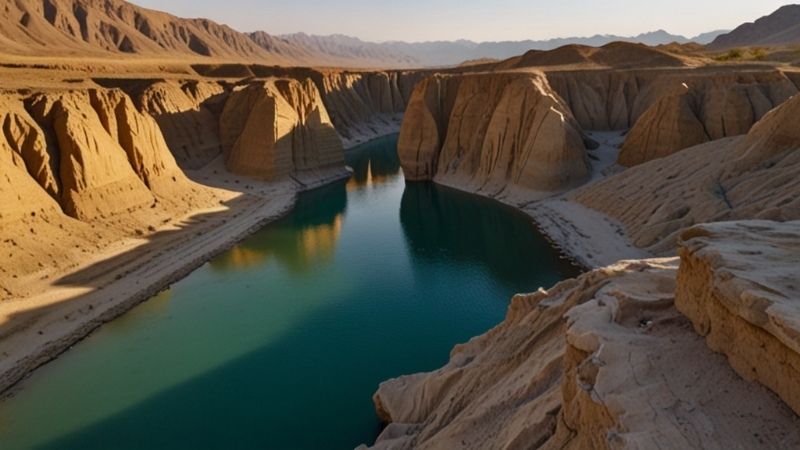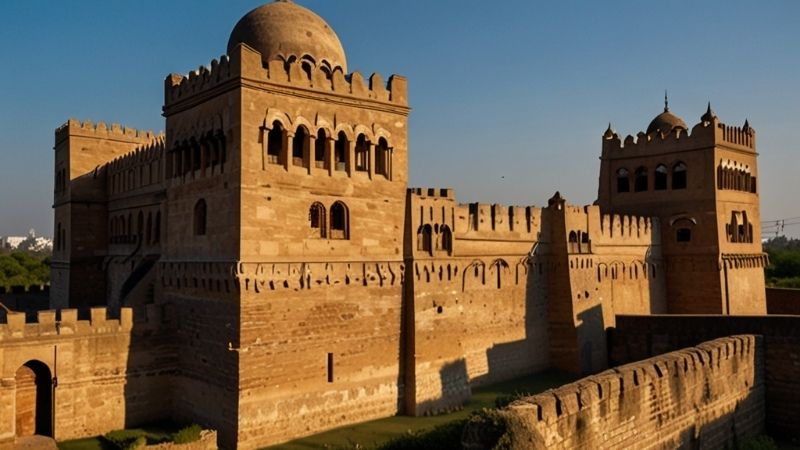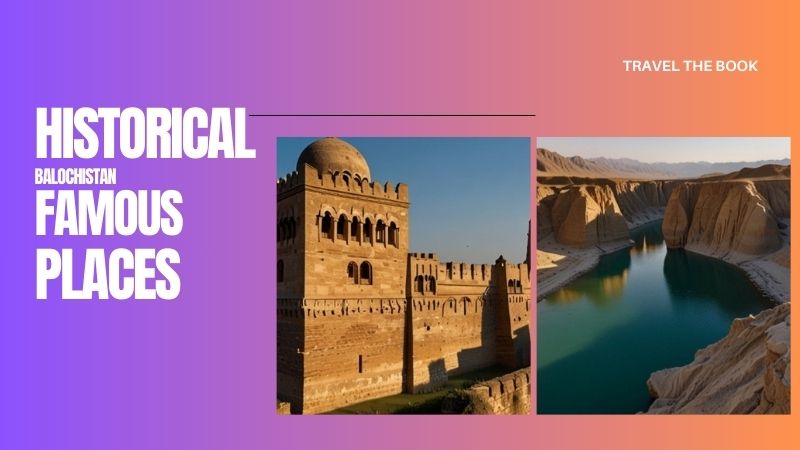Introduction:
Pakistan’s largest province is Balochistan, rich in history and culture. It is home to some of the oldest human settlements, providing a window into ancient civilizations. Balochistan’s historical sites, from archaeological curiosities to historic forts and ports, demonstrate their essential role in the region’s past. This blog explores ten famous historical sites in Balochistan and highlights the unique stories and significance of these places. Each attraction sheds light on the state’s diverse heritage and relationship with South Asian history.
Ancient Mehrgarh:
Mehrgarh is one of South Asia’s most important archaeological sites and dates back to B.C. It dates back to 7000 BC and is one of the oldest known agricultural areas. Located in the plains of Kutch in Balochistan, Mehrgarh marks the transition from hunter-gatherer to agrarian society. The site provides:
- Insight into early human settlements.
- Showing evidence of ancient agriculture, pottery, and metallurgy.
- Making it a cornerstone of understanding the pre-Indus Valley Civilization.
The Mysterious Hingol National Park:

Hingol National Park is a wonder and a place of historical and religious significance. It is home to the ancient Hindu temple Hingol Mata and a revered pilgrimage site. The park’s rugged terrain, unique rock formations, and abundant wildlife have attracted visitors for centuries [Historical Balochistan Famous Places]. The Hingol River, the longest river in Balochistan, flows through the park, adding to its geographical and historical importance.
Also Read: Faisalabad Famous Places to Visit That Attract Visitors
Quaid-e-Azam Residency:
Quaid-e-Azam Residency in Ziarat is a symbol of Pakistan’s freedom movement. This historic wooden house was the residence of Pakistan’s founder, Muhammad Ali Jinnah, in his later years. Nestled within a lush green juniper forest, the residence has become a place of pilgrimage for those who want to pay tribute to Jinnah and those who wish to contemplate the founding of Pakistan.
The Enigmatic Fort of Rannikot:
Rannikot Fort, also known as the “Great Wall of Sindh,” is a fortification near Sann in Jamshoro district. Although it is not limited to Balochistan, its proximity has also affected the region. The castle’s history, one of the world’s largest castles with its walls exceeding 30 kilometers, still preserves its mystery [Historical Balochistan Famous Places]. Archaeologists debate its origin and purpose, but it is a testament to the rich and diverse history of the area.
Gwadar:
Gwadar is now famous for its port and rich historical past. It is part of the Omani empire; evidence of its history can be found in the Old City, which has a fishing community and ancient mosques. The Portuguese settled in Gwadar briefly in the 16th century, contributing to its diverse history. Combining ancient heritage with modern development has become essential to the China-Pakistan Economic Corridor.
The Mystical Mud Volcanoes of Balochistan:
The mud volcanoes near Hingol and Gwadar are of geological interest and culturally significant for the local Baloch people. These natural phenomena are caused by gas emissions deep within the earth, forming countless mud cones. The school is both a research center and home to local legends that highlight the intersection of Balochistan’s history and cultural mythology.
The Grandeur of Kalat:
Kalat was once the center of the robust and well-established Kalat Khanate. Kalat Fort is an essential landmark of the region, symbolizing its history and politics. The Khanate played a crucial role in regional politics from the 17th to the 19th centuries, and its interactions with British India are well documented [Historical Balochistan Famous Places]. Kalat remains an integral part of Balochistan’s culture and history.
The Ancient Ruins of Gondrani:
The ancient cave city of Gondrani, the House of Spirits, is located near Beira in Balochistan. Believed to date back to the seventh century, these rock-cut structures later served as shelter for monks and villagers. The site’s historical significance lies in the uniqueness of its architecture and the insight it provides into the region’s early culture and relationships.
The Fortified Town of Bela:

Bela is a historically significant city that is part of the ancient country of Sindh. It has always been an important center of trade and culture, at the point where the Arabian Sea and the interior of South Asia are located. The remains of its fortifications and historical structures attest to its importance over the centuries. Beira’s rich history is reflected in its mix of architectural styles and traditions.
The Ancient Part of Pasni:
Pasni is an old seaside town that has been an important maritime center for centuries. It is a crucial point for naval trade connecting South Asia to the Middle East and beyond. Archaeological evidence shows that Pasni was a port during the Indus Valley Civilization and was later ruled by various empires, including the Mughals and the British. The city’s historical importance is associated with its modern role in Pakistan’s fishing industry.
Conclusion:
The historical sites of Balochistan epitomize the essence of the region that witnessed the rise and fall of civilization, the blend of cultures, and the importance of habitat. Each attraction is rich in Balochistan’s history, from the ancient farmhouse of Mehrgarh to the bustling Balochistan’s Gwadar [Historical Balochistan Famous Places]. The long history of these places is not a relic of the past but the culture and history of the region. Studying these important symbols provides an understanding of BBalochistan’scontribution to the larger narrative of human history and underlines its importance as a repository of history.
Historical Balochistan Famous Places – FAQs:
Q1. How many historical monuments are there in Balochistan?
Ans: Of the approximately 400 sites and monuments protected under the Antiquities Act 1975, there are 7 Category 1 sites, 8 Category II sites, and 14 Category III sites in the state.
Q2. What is Balochistan culture famous for?
Ans: Baloch people have a beautiful culture with unique paintings, gorgeous embroidery, and exquisite beauty. While Balochi embroidery stands out for its stunning designs and colors, Balochi carpets and rugs are known for their durability and beauty.
Q3. What is the famous spot of Balochistan?
Ans: Lake Hanna has become a popular tourist destination in Balochistan and is known for its stunning beauty against the majestic landscape. Located near Quetta, this beautiful lake is a peaceful retreat for those who want to relax amidst beautiful scenery.

